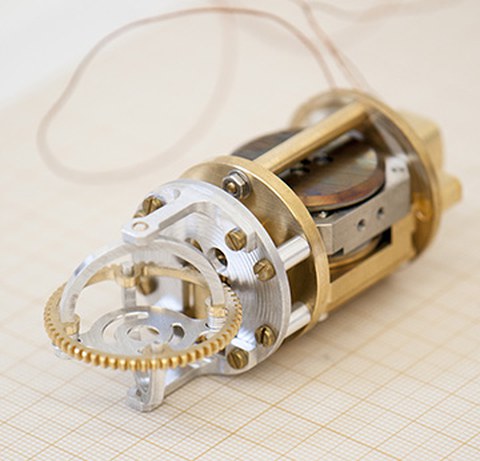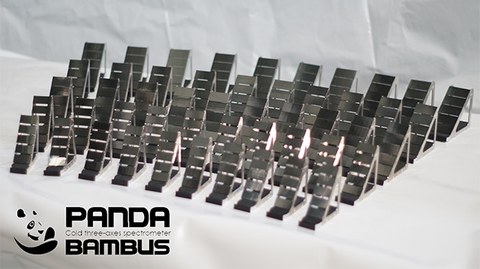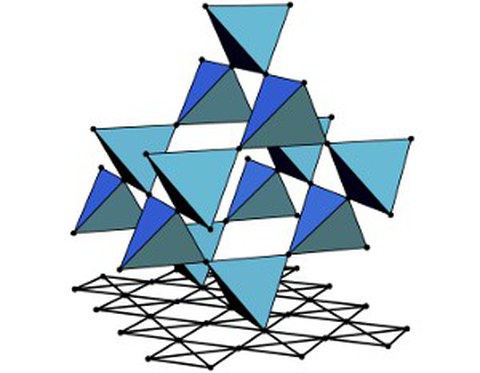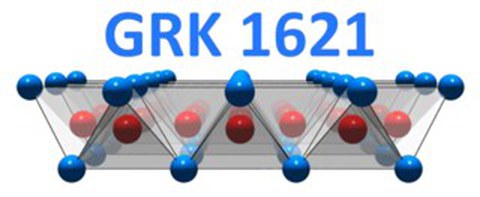Our Research Grants
Current projects

Piezo rotator for a cryomagnet
This project was motivated by our recent observation of a strong field-angular anisotropy of magnetic excitations induced in the heavy-fermion metal CeB6 by strong magnetic fields [Phys. Rev. X 10 (2020), 021010]. To facilitate neutron-scattering studies versus field direction under continuous field rotation, we developed and manufactured a piezo-driven rotator (see Figure) compatible with standard cryomagnets used at both triple-axis and time-of-flight neutron spectrometers worldwide. This new piece of sample environment can rotate single-crystal samples with high precision in situ in a magnetic field and at low temperatures. It thereby adds a new dimension to neutron spectroscopy, enabling acquisition of spin-excitation spectra at any given momentum vector Q as a function of magnetic field and its direction.
This individual research grant of the German Research Foundation is a logical continuation of our completed project IN 209/4. It was motivated by the theoretical prediction of topological Weyl magnons in Cu2OSeO3, which our group verified experimentally with neutron spectroscopy [Phys. Rev. Research 2 (2020), 013063], and by the observation of gapped pseudo-Goldstone magnon modes in the centrosymmetric cubic helimagnet ZnCr2Se4 that are not expected within linear spin-wave theory [Phys. Rev. X 7 (2017), 041049]. Here we will continue with a systematic investigation of low-energy spin waves in helimagnets such as ZnCr2Se4, SrFeO3, Sr3Fe2O7, FeP, CrAs, FeAs with a particular focus on the possibility of topological magnon excitations, the emergent pseudo-Goldstone magnon modes, and the influence of noncoplanar multi-q spin structures on the low-energy spin excitation spectrum.
Development of the BAMBUS multianalyzer for the cold-neutron triple-axis spectrometer PANDAapproaches its completion. Since 2013, our group takes part in this 1.4 MEUR project that is funded by the German Federal Ministry of Education and Research (BMBF). The new multidetector system will extend the capabilities of the PANDA instrument, which is operated by the Jülich Center for Neutron Science (JCNS) at the MLZ/FRM-II research reactor in Munich, by providing the neutron users with a unique tool for an efficient mapping of the energy-momentum space using scattered neutrons with several final energies simultaneously. In the photo, one can see the heart of PANDA — the multianalyzer that consists of 250 precisely positioned pyrolytic graphite crystals.
We participate in the Collaborative Research Center 1143 “Correlated Magnetism: From Frustration to Topology” that was established at the TU Dresden in 2015. Our subproject C03 "Neutron spectroscopy of magnetic excitations" focuses on spin-dynamical properties of both itinerant and insulating materials with magnetic frustration. We aim at understanding exotic low-temperature phases, such as quantum spin liquids, spin-nematic order, or skyrmion lattices, via their magnetic fluctuation spectrum.
Completed Projects
This project is part of the newly established DFG Priority Programme 2137 "Skyrmionics: Topological spin phenomena in real space for applications". Our goal is to identify and characterize skyrmion phases in novel spintronic materials both in the bulk and in single-crystalline thin films. The primary goal of the project is to provide extensive characterization of such materials across their magnetic phase diagrams to guide the search for the most promising compounds to be used in prototype devices. Our main focus is on compounds with lower-than-cubic symmetry, such as Heusler allows, Co shandites, or thin films, in which additional anisotropy is introduced by the sample geometry. This should help to disentangle the roles of exchange parameters and Dzyaloshinskii-Moriya interactions on the one hand, and crystalline anisotropies and surface or interface effects on the other hand in the microscopic magnetic Hamiltonian of the system. We also look at potential host materials for antiferromagnetic skyrmions, which until now have not been uniquely identified experimentally.
This individual research grant of the German Research Foundation was aimed at understanding the low-energy spin dynamics of helimagnon excitations in chiral magnetic materials exhibiting spin-spiral or skyrmion order. We investigated compounds characterized by very different pitches of the spin helix or, if viewed in the reciprocal space, by different incommensurability parameters. Among them are both symmetric (Yoshimori-type) helimagnets like ZnCr2Se4 [Phys. Rev. X 7 (2017), 041049; Phys. Rev. B 102 (2020), 184431] or SrFeO3 [Phys. Rev. B 101, 134406 (2020)] and chiral compounds with antisymmetric Dzyaloshinskii-Moriia interactions like Cu2OSeO3 [Nature Comm. 7 (2016), 10725] or other skyrmion hosts with the B20 structure. These materials span the applicability range of both small-angle neutron scattering and conventional neutron diffraction and spectroscopy methods.
Funded by the German Research Foundation over a period of 6 years, this research grant has allowed us to improve the understanding of low-temperature multipolar ordering phenomena and spin dynamics in heavy-fermion compounds such as CeB6, Ce1-xLaxB6, and Ce3Pd20Si6. Several important discoveries have been made in the course of this project, in particular the first-time observation of incommensurate multipolar order in Ce3Pd20Si6 whose propagation vector can be tuned continuously by an external magnetic field [Phys. Rev. B 94 (2016), 245132] and a very systematic investigation of the field-induced magnon excitations in the antiferroquadrupolar phase of CeB6 [Phys. Rev. B 94 (2016), 035114]. Our current state of knowledge about the magnetic phase diagram and spin excitations in the Ce1-xLaxB6 family of compounds has been summarized in our recent review article [Rep. Prog. Phys. 79 (2016), 066502]. In 2017, after a highly positive evaluation of our first results, the funding for this project has been prolonged by the DFG for 3 more years until 2020. In this second funding period, we investigated the field-space anisotropy of the magnetic phase diagrams in Ce1-xLaxB6 [Phys. Rev. B 103 (2021), 214415] and that of multipolar excitations in CeB6 [Phys. Rev. X 10 (2020), 021010] in rotating magnetic fields.
We also take part in the Research Training Group GRK 1621, where we study spin dynamics and nematic ordering phenomena in novel iron-based unconventional superconductors [C. R. Physique 17 (2016), 60-89], as well as low-temperature ordering effects in itinerant f-electron systems.
The project IN 209/1, completed in 2016, was part of the DFG Priority Programme 1458 "High-temperature superconductivity in iron pnictides", which involved in total 28 different subprojects from all over Germany. Our goal was to identify the elementary excitations mediating superconductivity in the iron pnictides and chalcogenides by analyzing spin excitation spectra measured by inelastic neutron scattering. We were also interested in the nature of the spin-nematic phase that precedes magnetic ordering in these compounds. This enigmatic state is particularly stable, for instance, in the recently discovered (CaFe1−xPtxAs)10Pt3As8 superconductors, commonly referred to as "10-3-8". Our neutron-scattering measurements in combination with NMR spectroscopy revealed the opening of a pseudogap well above the superconducting transition. It was accompanied by the formation of an unusual resonance-like feature in the spin-excitation spectrum [Phys. Rev. B 91, 1045015 (2015)].
Moreover, we were also interested in the influence of magnetic impurities on the spin dynamics. Whenever localized magnetic moments are introduced into the superconducting FeAs layers of iron pnictides, they rapidly suppress superconductivity and lead to the formation of noncollinear magnetic order and other anomalous phases. By studying the BaFe2As2 compound doped by manganese, we revealed its influence on the anisotropy gap and the dimensionality of spin fluctuations, as well as the stabilization of (π,π) magnetic excitations that are not found in the pure BaFe2As2 parent compound [Phys. Stat. Sol. B 254 (2017), 1600162].
For more information about our published results, see our publication list.



